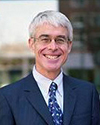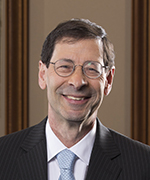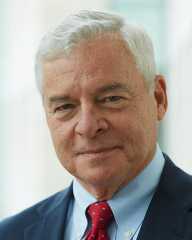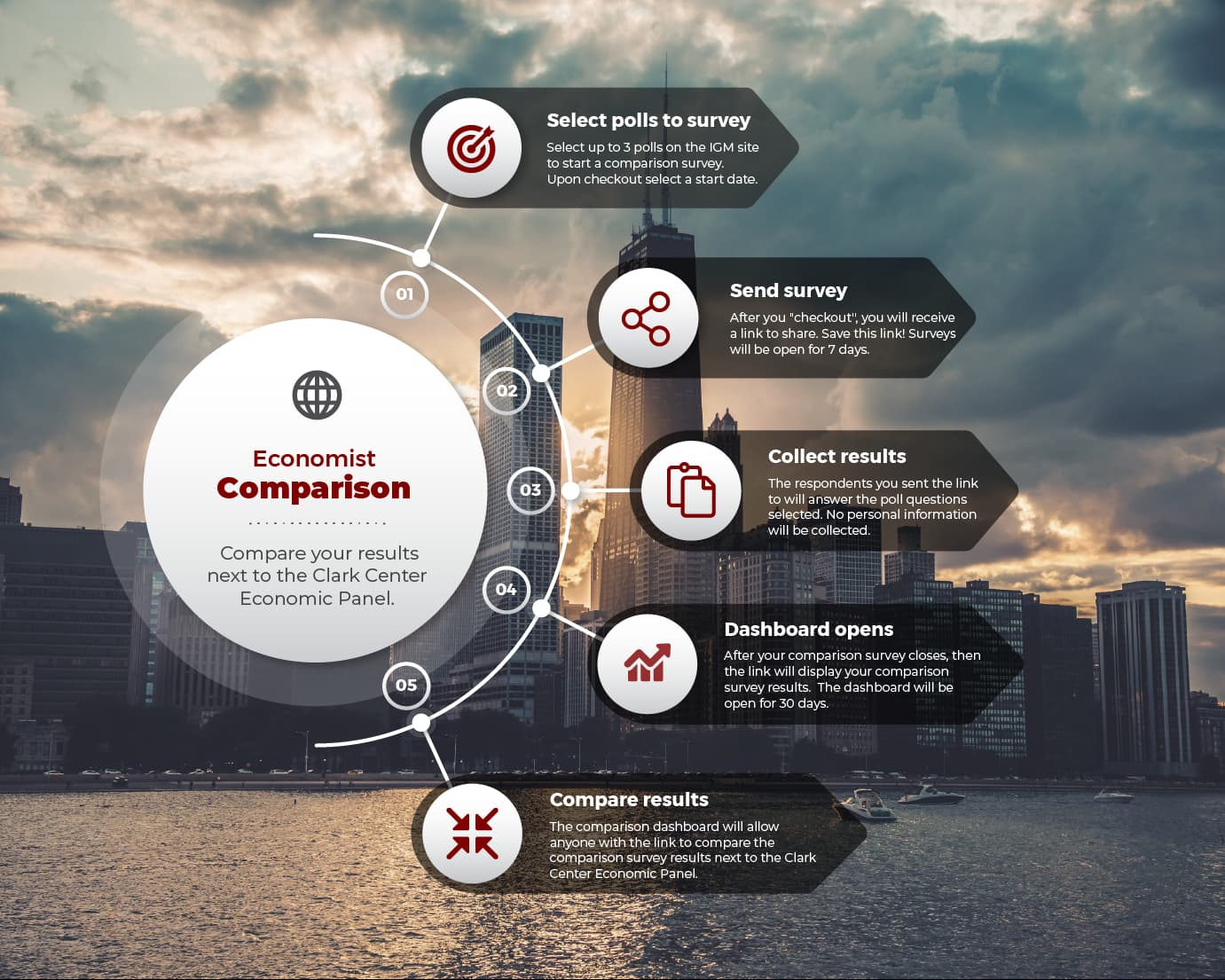Question A:
A tolling program for New York City is out for public consultation with proposed charges on vehicles entering the central business district of Manhattan summarized here: https://new.mta.info/document/129191
The proposed tolls on vehicles entering the central business district of Manhattan are likely to lead to a substantial reduction in traffic congestion in the targeted area.
Responses
Responses weighted by each expert's confidence
Question B:
The proposed tolls on vehicles entering Manhattan are likely to lead to a substantial increase in traffic congestion just outside the central business district, above 60th Street, in the outer boroughs and New Jersey.
Responses
Responses weighted by each expert's confidence
Question A Participant Responses
| Participant | University | Vote | Confidence | Bio/Vote History |
|---|---|---|---|---|
 Daron Acemoglu |
MIT | Bio/Vote History | ||
|
|
||||
   Mark Aguiar |
Princeton | Bio/Vote History | ||
|
I believe the impact will be modest, rather than substantial. Other than for commuters, the elasticity will be fairly low.
|
||||
   Joseph Altonji |
Yale | Bio/Vote History | ||
|
|
||||
   Alan Auerbach |
Berkeley | Bio/Vote History | ||
|
|
||||
   David Autor |
MIT | Bio/Vote History | ||
|
Worked well in London. I’m not sufficiently steeped in the details of the NYC policy to know if will work equally well.
|
||||
   Abhijit Banerjee |
MIT | Bio/Vote History | ||
|
|
||||
   Dirk Bergemann |
Yale | Bio/Vote History | ||
|
|
||||
   Marianne Bertrand |
Chicago | Bio/Vote History | ||
|
|
||||
   Markus Brunnermeier |
Princeton | Bio/Vote History | ||
|
|
||||
   Judith Chevalier |
Yale | Bio/Vote History | ||
|
|
||||
   David Cutler |
Harvard | Bio/Vote History | ||
|
|
||||
   Darrell Duffie |
Stanford | Bio/Vote History | ||
|
Although the London experience is not necessarily going to apply in New York, it tells predicts this sort of outcome if the tolls are sufficiently high and comprehensive.,
|
||||
   Aaron Edlin |
Berkeley | Did Not Answer | Bio/Vote History | |
|
|
||||
   Barry Eichengreen |
Berkeley | Bio/Vote History | ||
|
|
||||
   Liran Einav |
Stanford | Bio/Vote History | ||
|
|
||||
   Ray Fair |
Yale | Bio/Vote History | ||
|
|
||||
   Edward Glaeser |
Harvard | Bio/Vote History | ||
|
The track record of congestion pricing is good good in London, Singapore and Stockholm.
-see background information here |
||||
   Pinelopi Goldberg |
Yale | Bio/Vote History | ||
|
|
||||
   Michael Greenstone |
University of Chicago | Bio/Vote History | ||
|
|
||||
   Oliver Hart |
Harvard | Bio/Vote History | ||
|
|
||||
   Bengt Holmström |
MIT | Bio/Vote History | ||
|
Depends on alternative modes of transportation. Still, expect substantial reduction in traffic as seen elsewhere.
|
||||
   Caroline Hoxby |
Stanford | Bio/Vote History | ||
|
I agree to the sign of the effect. However, I have no idea how NYC arrived at the specific prices. They seem arbitrary. Why not practice dynamic, market-based congestion pricing? This is more optimal and can managed very well these days.
|
||||
   Hilary Hoynes |
Berkeley | Bio/Vote History | ||
|
|
||||
   Erik Hurst |
Chicago Booth | Bio/Vote History | ||
|
|
||||
   Kenneth Judd |
Stanford | Bio/Vote History | ||
|
|
||||
   Steven Kaplan |
Chicago Booth | Bio/Vote History | ||
|
Will lead to a reduction. Question is exactly what substantial means.
|
||||
   Anil Kashyap |
Chicago Booth | Bio/Vote History | ||
|
|
||||
   Pete Klenow |
Stanford | Bio/Vote History | ||
|
|
||||
   Jonathan Levin |
Stanford | Bio/Vote History | ||
|
|
||||
   Eric Maskin |
Harvard | Bio/Vote History | ||
|
|
||||
   William Nordhaus |
Yale | Bio/Vote History | ||
|
|
||||
   Maurice Obstfeld |
Berkeley | Bio/Vote History | ||
|
Evidence for London seems somewhat ambiguous.
|
||||
   Parag Pathak |
MIT | Did Not Answer | Bio/Vote History | |
|
|
||||
   Larry Samuelson |
Yale | Bio/Vote History | ||
|
Experience with congestion pricing in other cities, such as London, suggests there will be a significant effect.
|
||||
   José Scheinkman |
Columbia University | Bio/Vote History | ||
|
``The number of private cars, vans, and trucks coming into central London
dropped 27 percent between 2002 (before the charge) and 2003".(Leape in Journal Of Economic Perspectives, 2006)
|
||||
   Richard Schmalensee |
MIT | Bio/Vote History | ||
|
|
||||
   Fiona Scott Morton |
Yale | Bio/Vote History | ||
|
we have seen this experiment in other cities and it has worked well.
|
||||
   Carl Shapiro |
Berkeley | Bio/Vote History | ||
|
|
||||
   Robert Shimer |
University of Chicago | Bio/Vote History | ||
|
|
||||
   Stefanie Stantcheva |
Harvard | Bio/Vote History | ||
|
|
||||
   James Stock |
Harvard | Did Not Answer | Bio/Vote History | |
|
|
||||
   Nancy Stokey |
University of Chicago | Bio/Vote History | ||
|
The tools are high enough to have a substantial impact.
|
||||
   Chad Syverson |
Chicago Booth | Bio/Vote History | ||
|
London saw a decrease in traffic for a few years but in the long run it seems to have come back. (Though of course it is hard to know the counterfactual; traffic could well be even worse now if not for the congestion charge.)
|
||||
   Richard Thaler |
Chicago Booth | Bio/Vote History | ||
|
Not sure about “substantial”.
|
||||
   Christopher Udry |
Northwestern | Bio/Vote History | ||
|
The proposed tolls are not as nuanced as would be preferred, but should be sufficient to achieve this goal
|
||||
   Ivan Werning |
MIT | Bio/Vote History | ||
|
Tolls reduce traffic. Caveats: big effects need high enough price (may have to raised) + design features might mitigate reduction a bit (some drivers may pay to enter then stay/drive longer to avoid repaying).
Overall expect reduction by "Law of Demand": D(p) curve slopes down.
|
||||
Question B Participant Responses
| Participant | University | Vote | Confidence | Bio/Vote History |
|---|---|---|---|---|
   Daron Acemoglu |
MIT | Bio/Vote History | ||
|
|
||||
   Mark Aguiar |
Princeton | Bio/Vote History | ||
|
|
||||
   Joseph Altonji |
Yale | Bio/Vote History | ||
|
|
||||
   Alan Auerbach |
Berkeley | Bio/Vote History | ||
|
|
||||
   David Autor |
MIT | Bio/Vote History | ||
|
|
||||
   Abhijit Banerjee |
MIT | Bio/Vote History | ||
|
|
||||
   Dirk Bergemann |
Yale | Bio/Vote History | ||
|
|
||||
   Marianne Bertrand |
Chicago | Bio/Vote History | ||
|
|
||||
   Markus Brunnermeier |
Princeton | Bio/Vote History | ||
|
|
||||
   Judith Chevalier |
Yale | Bio/Vote History | ||
|
Different transit options and locations can be substitutes of complements in a way that can be studied but is difficult to characterize all together.
|
||||
   David Cutler |
Harvard | Bio/Vote History | ||
|
|
||||
   Darrell Duffie |
Stanford | Bio/Vote History | ||
|
While one could expect some people to commute by car to the boundary and then take mass transit for the remainder of their travel, I have little sense of how substantial that will be.
|
||||
   Aaron Edlin |
Berkeley | Did Not Answer | Bio/Vote History | |
|
|
||||
   Barry Eichengreen |
Berkeley | Bio/Vote History | ||
|
|
||||
   Liran Einav |
Stanford | Bio/Vote History | ||
|
|
||||
   Ray Fair |
Yale | Bio/Vote History | ||
|
|
||||
   Edward Glaeser |
Harvard | Bio/Vote History | ||
|
If you get from place a to place b through place c, then a congestion charge on place c will lead to displacement, but if place c is a destination from place a and place b then a congestion charge in place c should reduce congestion in places a and b.
|
||||
   Pinelopi Goldberg |
Yale | Bio/Vote History | ||
|
Still a good idea, if revenue is used towards improvements in public transport. Would decrease congestion everywhere in the long run.
|
||||
   Michael Greenstone |
University of Chicago | Bio/Vote History | ||
|
substitution patterns are HARD to predict
|
||||
   Oliver Hart |
Harvard | Bio/Vote History | ||
|
|
||||
   Bengt Holmström |
MIT | Bio/Vote History | ||
|
Again, depends on alternative forms of transportation avaklable. I’m not familiar with this.
|
||||
   Caroline Hoxby |
Stanford | Bio/Vote History | ||
|
We do not have well-estimated, causal cross elasticities between the CBD and other areas. Thus, anyone claiming to know the answer to this question is just guessing.
|
||||
   Hilary Hoynes |
Berkeley | Bio/Vote History | ||
|
|
||||
   Erik Hurst |
Chicago Booth | Bio/Vote History | ||
|
|
||||
   Kenneth Judd |
Stanford | Bio/Vote History | ||
|
|
||||
   Steven Kaplan |
Chicago Booth | Bio/Vote History | ||
|
|
||||
   Anil Kashyap |
Chicago Booth | Bio/Vote History | ||
|
|
||||
   Pete Klenow |
Stanford | Bio/Vote History | ||
|
|
||||
   Jonathan Levin |
Stanford | Bio/Vote History | ||
|
|
||||
   Eric Maskin |
Harvard | Bio/Vote History | ||
|
|
||||
   William Nordhaus |
Yale | Bio/Vote History | ||
|
|
||||
   Maurice Obstfeld |
Berkeley | Bio/Vote History | ||
|
|
||||
   Parag Pathak |
MIT | Did Not Answer | Bio/Vote History | |
|
|
||||
   Larry Samuelson |
Yale | Bio/Vote History | ||
|
It is more difficult to predict how people will substitute away from driving into the congestion area, and hence the extend of congestion just outside the area.
|
||||
   José Scheinkman |
Columbia University | Bio/Vote History | ||
|
This substantial increase did not materialize in London, perhaps because of improvements in traffic management systems in border areas. In the case of NJ, this may require coordination between the two state authorities, which may not be forthcoming.
|
||||
   Richard Schmalensee |
MIT | Bio/Vote History | ||
|
A major traffic increase in all those places seems unlikely, but I don’t know enough to have any confidence.
|
||||
   Fiona Scott Morton |
Yale | Bio/Vote History | ||
|
There is no obvious means of transferring freight or passengers at this border.
|
||||
   Carl Shapiro |
Berkeley | Bio/Vote History | ||
|
|
||||
   Robert Shimer |
University of Chicago | Bio/Vote History | ||
|
|
||||
   Stefanie Stantcheva |
Harvard | Bio/Vote History | ||
|
|
||||
   James Stock |
Harvard | Did Not Answer | Bio/Vote History | |
|
|
||||
   Nancy Stokey |
University of Chicago | Bio/Vote History | ||
|
Without some knowledge about what NYC commuting patterns look like, it's hard to say.
|
||||
   Chad Syverson |
Chicago Booth | Bio/Vote History | ||
|
We usually see some substitution to spatial pricing, though again it is difficult to know how much to expect in this case.
|
||||
   Richard Thaler |
Chicago Booth | Bio/Vote History | ||
|
|
||||
   Christopher Udry |
Northwestern | Bio/Vote History | ||
|
I think that the effects will be very heterogeneous, depending on the local road topography.
|
||||
   Ivan Werning |
MIT | Bio/Vote History | ||
|
A real possibility but we do not know. Theoretically, a toll on driving below 60th(A) may raise or lower driving above 60th(B). In Econ speak: depends on whether A and B goods are complements or substitutes, an empirical issue.
Stigler famously made a related point about crime.
-see background information here |
||||

